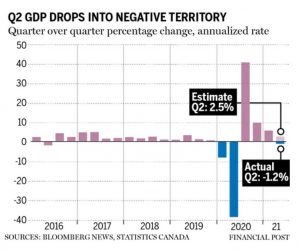Buying your first home is an incredible step in life, but it is not without its hurdles! One of which is demonstrating that you are creditworthy, which all comes down to your credit rating. This is how lenders and credit agencies determine the interest rate you pay, or whether you will qualify for a mortgage at all.
As mortgage rules continue to change, the credit rating is becoming even more important as a higher credit rating could mean a lower interest rate and save you thousands of dollars over the life of your mortgage.
If you’ve never given much thought to your credit rating before, don’t worry! It is not too late and we are going to take through everything you need to know. The most important of which is that, in order to qualify for a home, you must have a credit rating of at least 680 for one borrower.
There are several attributes that factor into your credit score, and these are commonly referred to as the “Four C’s” and consist of: Character, Capacity, Capital, and Collateral. Let’s take a closer look at each:
character
The character component of your credit score is essentially based on YOU and your personal habits, which comes down to whether or not it is in your nature to pay debts on time. Some of the components that make up this portion of your credit score viability, include:
- Whether you habitually pay your bills on time
- Whether you have any delinquent accounts
- How you use your available credit:
- Quick Tip – Using all or most of your available credit is not advised. It is better to increase your credit limit versus utilizing more than 70% of what is available each month. For instance, if you have a limit of $1000 on your credit card, you should never go over $700.
- If you need to increase your score faster, a good place to start is using less than 30% of your credit limit.
- If you need to use more, pay off your credit cards early so you do not go above 30% of your credit limit.
- Your total outstanding debt
capacity
The second component relating to your credit rating is your capacity. This refers to your ability to pay back the loan and factors in your cash flow versus your debt outstanding, as well as your employment history.
- How long have you been with your current employer?
- If you are self-employed, for how long?
Don’t be confused as capacity is not what YOU think you can afford; it is what the LENDER thinks you can afford depending on the debt service ratio. This ratio is used by lenders to take your total monthly debt payments divided by your gross monthly income to determine whether or not you are able to pay back the loan.
capital
Capital is the amount of money that a borrower puts towards a potential loan. In the case of mortgages, the starting capital is your down payment. A larger contribution often results in better rates and, in some cases, better mortgage terms. For instance, a mortgage with a down payment of 20% does not require default insurance, which is an added cost.
When considering this component, it is a good idea to look at how much you have saved and where your down payment funds will be coming from. Is it a savings account? RRSPs? Or maybe it is a gift from an immediate family member.
collateral
Collateral is something that is pledged against a loan for security of repayment. In the case of auto loans, the loan is typically secured by the vehicle itself as the vehicle would be repossessed and re-sold in the event that the loan is defaulted on. In the case of mortgages, lenders typically consider the value of the property you are purchasing and other assets. They want to see a positive net worth; a negative net worth may result in being denied for a mortgage.
Overall, loans with collateral backing are typically more secure and generally result in lower interest rates and better terms.
There is no better time than now to recognize the importance of your credit score and check if you are on track with the Four C’s and your debt habits. A misstep in any one of these areas could be detrimental to your efforts of getting a mortgage.
If you are not sure or want more information, reach out for a FREE review!
Article Published by DLC Marketing Team
